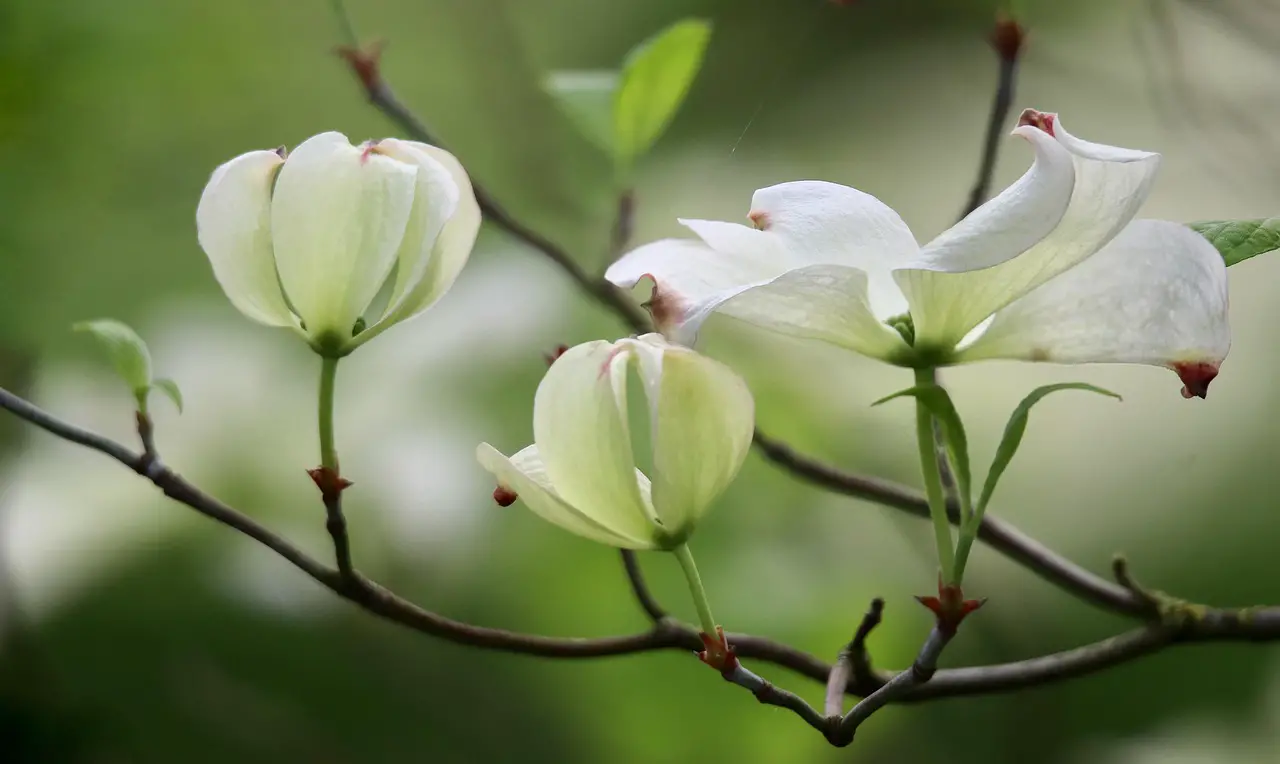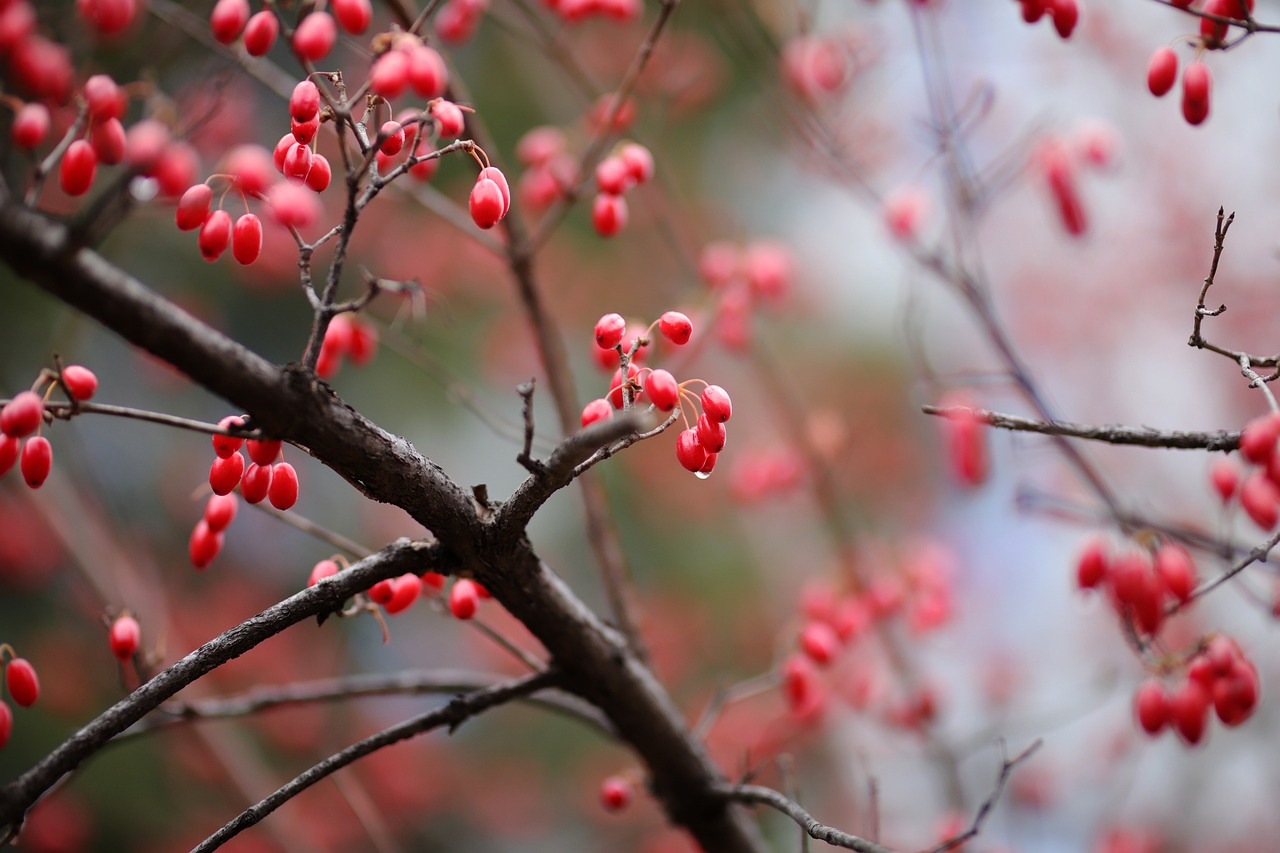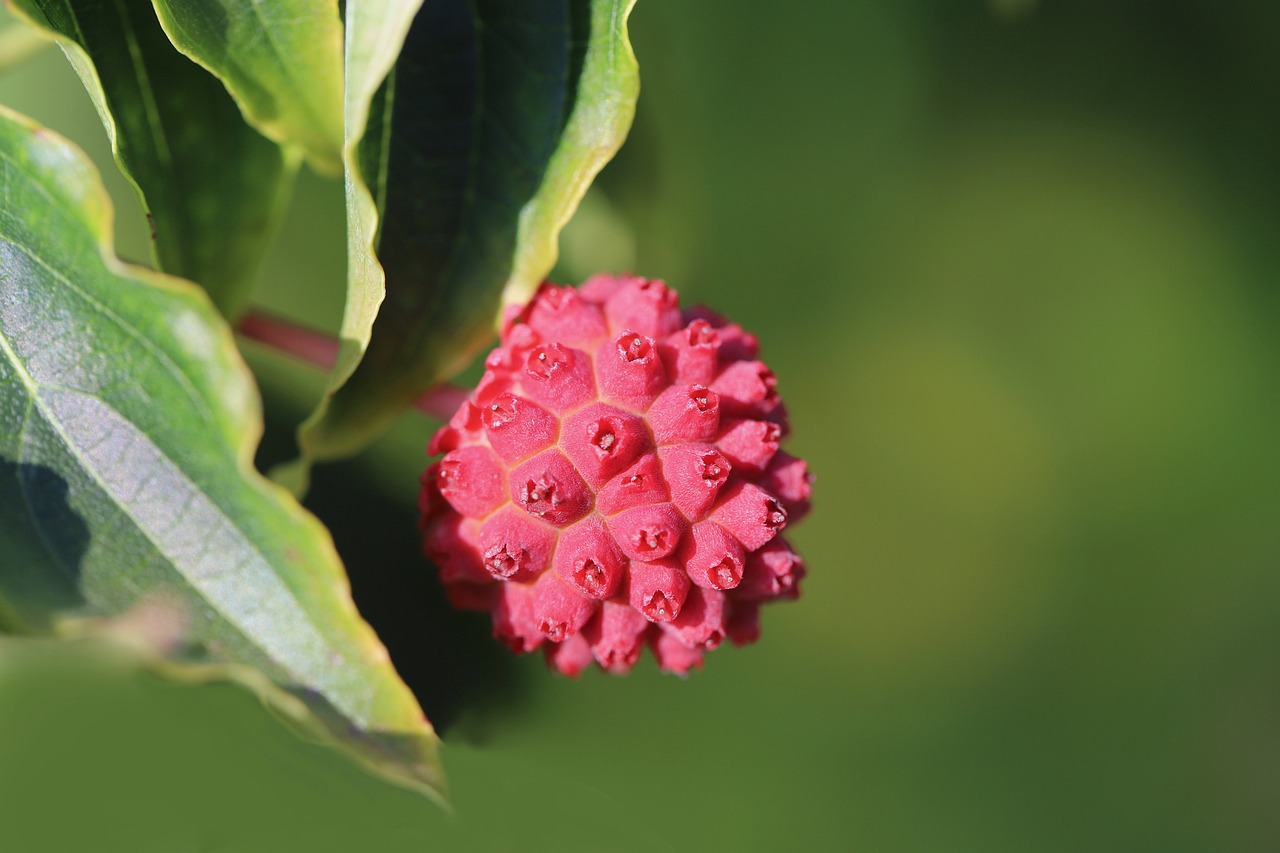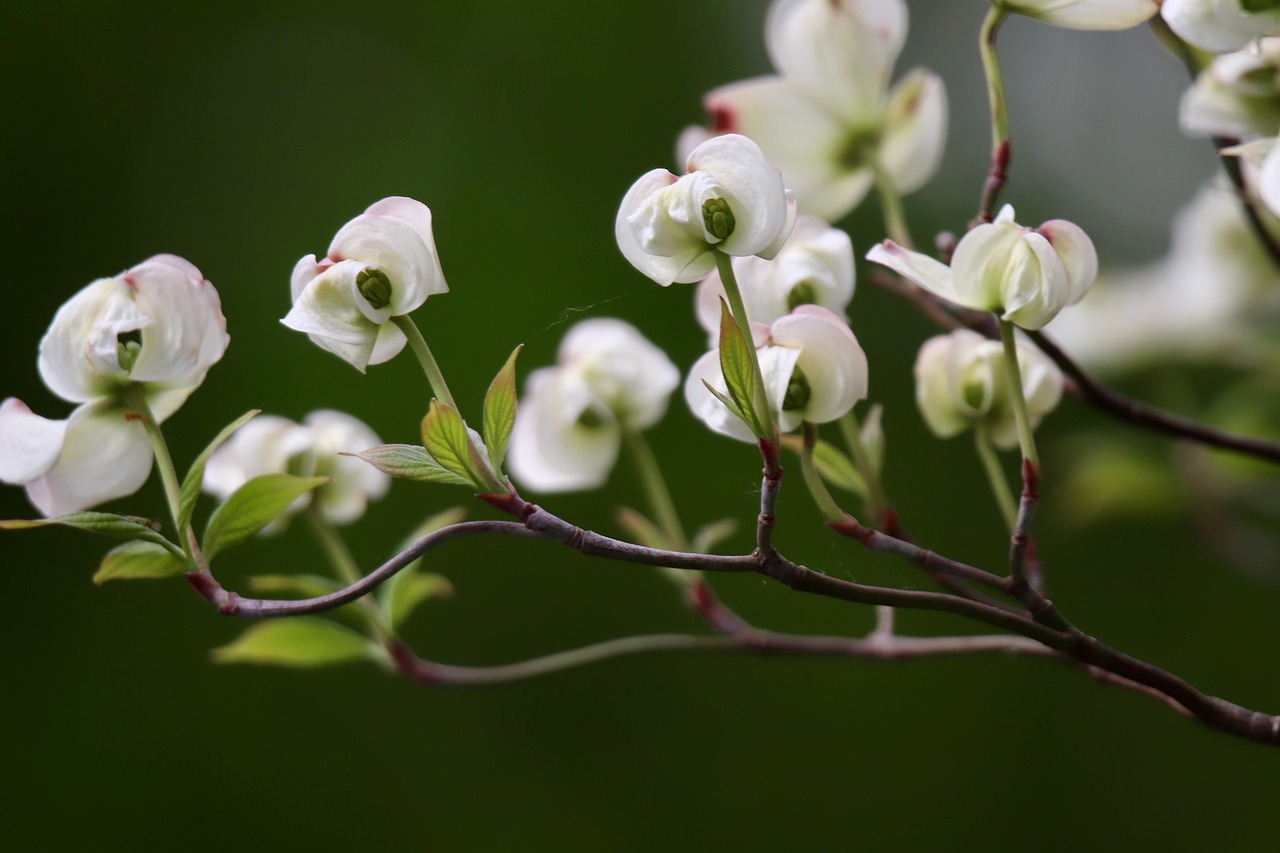Pruning dogwood trees for minimal maintenance involves careful timing and technique. The best time to prune is in late winter or early spring. Focus on removing dead or diseased branches to promote healthy growth and maintain the tree’s shape.
Dogwood trees are beloved for their stunning flowers and vibrant foliage. However, maintaining their health and appearance can be challenging without the right approach to pruning. Pruning not only enhances the aesthetic appeal of these trees but also contributes to their overall health by allowing better air circulation and light penetration. When done correctly, pruning can significantly reduce the amount of maintenance required over time.

There are different types of dogwood trees, including flowering dogwoods (Cornus florida) and Korean dogwoods (Cornus kousa). Each variety has unique characteristics and specific needs when it comes to pruning. Understanding these differences is crucial for effective maintenance and ensuring the tree thrives in its environment.
Understanding Dogwood Trees
Before diving into pruning techniques, it is essential to understand the basic characteristics of dogwood trees. These trees are typically medium-sized and can range from 15 to 30 feet in height. Their blooms can vary in color, including white, pink, and red, depending on the species.
Dogwoods thrive in well-drained soil and prefer partial shade. They are known to be susceptible to certain diseases, such as dogwood anthracnose and powdery mildew. Regular pruning helps mitigate these issues by improving air circulation and reducing overcrowding, which can lead to disease.

| Type of Dogwood | Height | Bloom Color | Pruning Needs |
|---|---|---|---|
| Flowering Dogwood | 15-30 feet | White, Pink | Light pruning, remove dead branches |
| Korean Dogwood | 15-25 feet | White, Red | Minimal pruning, shape as needed |
| Pacific Dogwood | 20-30 feet | White | Thinning for air circulation |
The ideal time to prune dogwood trees is during their dormant season, which is late winter or early spring before new growth begins. This timing helps prevent shock and allows the tree to heal quickly. It is important to avoid pruning in the fall, as this can stimulate new growth that may not survive winter temperatures.
When pruning dogwoods, use clean and sharp tools. This practice minimizes damage to the tree and reduces the risk of disease transmission. Make cuts at a slight angle to promote water runoff and prevent rot. Always remove dead or diseased branches first, as they can harbor pests and diseases that threaten the health of the tree.
Pruning Techniques for Dogwood Trees
There are several essential techniques to employ when pruning dogwood trees. Each method serves a purpose and contributes to the overall health of the tree.

- Thinning: This technique involves removing selected branches throughout the tree to improve air circulation and light penetration. It prevents overcrowding and helps maintain a healthy structure.
- Heading Back: This method involves cutting back sections of branches to encourage bushier growth. It is particularly useful for shaping the tree and promoting new shoots.
- Cleaning: Always remove any dead, damaged, or diseased branches immediately. This step is crucial in preventing disease spread and promoting healthy growth.
- Shaping: While it is essential to maintain a natural shape, minor shaping can help enhance the tree’s form and overall appearance. Focus on creating a balanced silhouette.
Each of these techniques plays a vital role in maintaining dogwood trees with minimal maintenance. By implementing these practices effectively, gardeners can enjoy beautiful blooms and vibrant foliage without excessive effort.
In addition to regular pruning, consider other maintenance practices that support the health of dogwoods. Proper watering during dry spells, mulching around the base to retain moisture, and monitoring for pests are all important aspects of keeping these trees thriving.
Understanding the specific needs of your dogwood variety will further enhance your ability to care for these beautiful trees. By tailoring your approach based on the species, you can achieve optimal results with minimal effort.

Tools Needed for Pruning Dogwood Trees
Having the right tools is essential for effective pruning. Quality tools make the process easier and help ensure clean cuts, which promote quick healing for the tree. Here are some essential tools you should have:
- Hand Pruner: Ideal for small branches, hand pruners are essential for making precise cuts.
- Loppers: For branches that are thicker than what hand pruners can handle, loppers provide extra leverage and cutting power.
- Saw: A pruning saw is necessary for larger branches that require more strength to cut through.
- Bypass Pruners: These are preferred as they provide a clean cut, crucial for the health of the tree.
- Safety Gear: Gloves and safety goggles are important to protect yourself during the pruning process.
Before starting the pruning process, ensure that all tools are clean and sharp. This practice helps prevent the spread of diseases and makes cutting smoother, reducing stress on the tree.
Timing Your Pruning
Timing is crucial when it comes to pruning dogwood trees. The right timing ensures that the tree remains healthy and continues to thrive. Here are some key points regarding the timing of pruning:
- Late Winter to Early Spring: This is the ideal time for most pruning. The tree is still dormant, and it allows you to see the structure without leaves obstructing your view.
- Avoid Fall Pruning: Pruning in the fall can stimulate new growth that may not have time to harden off before winter. This can lead to damage during cold weather.
- After Blooming: For some dogwood species, light pruning after blooming can help shape the tree without sacrificing flowers for the next season.
By adhering to these timing guidelines, you can ensure that your dogwood trees remain healthy and beautiful with minimal effort.
Common Mistakes to Avoid When Pruning
Even experienced gardeners can make mistakes while pruning dogwood trees. Awareness of these common pitfalls can help prevent damage to your trees:
- Over-Pruning: Removing too many branches can stress the tree and affect its ability to produce blooms. Aim for moderation when pruning.
- Incorrect Cuts: Making cuts at the wrong angle or too close to the trunk can harm the tree. Always make cuts just beyond a bud or branch collar.
- Ignoring Disease Signs: Failing to recognize signs of disease before pruning can lead to further problems. Always inspect the tree carefully before starting.
- Pruning in Poor Weather: Wet or windy conditions can make pruning difficult and dangerous. Choose a clear day for your task.
Avoiding these mistakes will help you maintain healthy dogwood trees while minimizing maintenance efforts in the long run.
Pest and Disease Management
Pest and disease management is an essential part of maintaining dogwood trees. Regular monitoring can help catch issues early and minimize damage. Here are some common pests and diseases that affect dogwoods:
| Pest/Disease | Description | Control Methods |
|---|---|---|
| Dogwood Anthracnose | A fungal disease causing leaf spots and branch dieback. | Remove infected leaves and branches. Improve air circulation. |
| Powdery Mildew | A fungal infection that creates a white powdery coating on leaves. | Apply fungicides if severe. Ensure adequate spacing between trees. |
| Twig Borers | Bugs that bore into young twigs, causing dieback. | Inspect regularly and remove infested twigs. Use insecticidal soap if needed. |
| Scale Insects | These pests appear as small bumps on branches and leaves. | Use horticultural oils or insecticidal soap for control. |
By staying vigilant about pests and diseases, you can help your dogwood trees flourish with minimal maintenance. Regular inspections can be incorporated into your overall care routine, making it easier to spot problems before they escalate.
Nurturing Your Dogwood After Pruning
After pruning, it is essential to nurture your dogwood tree properly. This will support recovery and encourage healthy growth. Here are some nurturing practices to consider:
- Watering: Ensure your dogwood receives adequate water, especially during dry spells. Deep watering encourages strong root development.
- Mulching: Apply a layer of mulch around the base of the tree to retain moisture and suppress weeds.
- Fertilization: Depending on soil quality, consider applying a balanced fertilizer in early spring to support new growth.
- Pest Monitoring: Continue monitoring for pests after pruning to catch any new infestations early.
Nurturing your dogwood tree after pruning is crucial for its health and longevity. By following these practices, you will enjoy a vibrant and flourishing tree with minimal effort over time.
Seasonal Care for Dogwood Trees
Maintaining dogwood trees involves more than just pruning. Seasonal care is crucial to ensure they remain healthy and vibrant throughout the year. Each season presents unique challenges and opportunities for care.
Spring Care
Spring is a vital time for dogwood trees as they emerge from dormancy. Here are key practices to focus on during this season:
- Inspect for Damage: Check for any winter damage on branches and bark. Remove any dead or damaged limbs as needed.
- Monitor Pests: Early in the season, keep an eye out for pests such as aphids and scale insects. Take action promptly if you notice infestations.
- Watering: As new growth begins, ensure that your dogwood receives adequate moisture. Deep watering encourages strong root systems.
- Fertilization: Apply a balanced fertilizer designed for flowering trees to support new growth and blooming.
Summer Care
Summer care focuses on maintaining health and managing environmental stress. Consider the following:
- Consistent Watering: During hot months, dogwoods require regular watering. Aim for deep watering, especially during dry spells.
- Mulching: Replenish mulch as needed to retain soil moisture and suppress weeds. This practice also regulates soil temperature.
- Pest Management: Continue monitoring for pests and diseases. Early intervention is essential to prevent infestations from spreading.
Autumn Care
As leaves begin to change color and fall, it’s crucial to prepare your dogwood for winter:
- Leaf Cleanup: Rake fallen leaves to prevent the buildup of disease and pests. Dispose of them properly to minimize risks.
- Final Watering: Before the ground freezes, ensure your dogwood receives adequate water to support root health during dormancy.
- Mulching: Add a fresh layer of mulch around the base to protect roots from harsh winter conditions.
Winter Care
Winter presents challenges, but with proper care, your dogwood can survive hardships. Here are some practices to adopt:
- Protection from Extreme Cold: Consider wrapping young trees with burlap or using protective barriers against harsh winds and freezing temperatures.
- Avoid Salt Damage: If you live in areas where roads are salted, take precautions to prevent salt spray from damaging your tree’s roots.
- Pest Inspection: While most pests are dormant, check for any signs of overwintering pests or diseases and address them accordingly.
Dogwood Tree Varieties and Their Care Needs
Different varieties of dogwood trees have unique characteristics and care requirements. Understanding these differences is essential for optimal maintenance.
| Variety | Height | Flower Color | Care Notes |
|---|---|---|---|
| Flowering Dogwood (Cornus florida) | 15-30 feet | White, Pink | Requires consistent moisture; prone to anthracnose. |
| Korean Dogwood (Cornus kousa) | 15-25 feet | White, Red | Tolerates drought better; minimal pruning needed. |
| Pacific Dogwood (Cornus nuttallii) | 20-30 feet | White | Needs well-drained soil; susceptible to cankers. |
| Cornelian Cherry Dogwood (Cornus mas) | 15-25 feet | Yellow | Tolerates a variety of soils; excellent for hedges. |
Caring for each variety involves tailored approaches based on their specific needs. By understanding these differences, you can provide the best care possible.
Troubleshooting Common Issues with Dogwood Trees
Inevitably, dogwood trees may face various challenges. Identifying problems early can help you take corrective actions promptly. Here are some common issues and solutions:
- Poor Leaf Color: Leaves turning yellow may indicate nutrient deficiencies or overwatering. Test the soil pH and adjust fertilization accordingly.
- Bark Peeling: If you notice peeling bark, it could be a sign of stress or disease. Inspect the tree closely and consider consulting an arborist if needed.
- Lack of Blooms: If your dogwood isn’t flowering, it might not be receiving enough sunlight or nutrients. Ensure it is planted in an appropriate location with adequate light.
- Disease Symptoms: Watch for signs of diseases like powdery mildew or leaf spot. Early detection is critical for effective treatment.
Troubleshooting these issues quickly can prevent further damage and ensure your dogwood trees remain healthy and vibrant throughout the seasons.
Cultural Practices to Enhance Dogwood Tree Health
Cultural practices play a significant role in nurturing healthy dogwood trees. These practices include selecting the right planting location, proper spacing, and companion planting.
- Selecting the Right Location: Dogwoods prefer partial shade to full sun, so choose a location that allows them to thrive without excessive stress from heat.
- Proper Spacing: Ensure adequate space between trees to promote air circulation and reduce competition for nutrients and water.
- Companion Planting: Consider planting beneficial companion plants that can help deter pests or provide necessary nutrients without competing for resources.
By incorporating these cultural practices into your gardening routine, you will create an environment that supports healthy growth and minimizes maintenance requirements for your dogwood trees.
Additional Tips for Long-Term Dogwood Tree Care
In addition to the practices already discussed, there are further considerations that can enhance the longevity and health of your dogwood trees. These additional tips will help ensure that your dogwoods remain vibrant and low-maintenance.
Soil Testing and Amendments
Healthy soil is crucial for the growth of dogwood trees. Conducting a soil test can provide insight into pH levels and nutrient availability. Here are some steps to follow:
- Test the Soil: Use a home testing kit or send a sample to a local extension service to determine pH and nutrient levels.
- Adjust pH: Dogwoods prefer slightly acidic to neutral pH (around 6.0 to 7.0). If your soil is too alkaline, consider adding sulfur or organic matter to lower the pH.
- Add Nutrients: Based on soil test results, you may need to add specific fertilizers or amendments to ensure adequate nutrient availability for your trees.
Mulching Techniques
Mulching not only suppresses weeds but also helps retain moisture and regulate soil temperature. Here are some effective mulching practices:
- Type of Mulch: Organic mulches like wood chips or shredded bark are ideal as they decompose over time, enriching the soil.
- Depth: Apply a layer of mulch 2 to 4 inches deep around the root zone, but keep it away from the trunk to prevent rot.
- Replenishment: Refresh your mulch layer annually, especially in spring, to maintain its benefits.
Pruning for Aesthetic Appeal
While minimal maintenance is a goal, some owners also desire aesthetic appeal from their dogwood trees. Consider these additional pruning tips:
- Seasonal Shaping: After flowering in spring, light shaping can enhance the tree’s overall appearance and encourage fuller growth.
- Focus on Structure: Regularly assess the tree’s structure and remove any branches that disrupt symmetry or balance.
- Artistic Pruning: For those who enjoy landscape design, consider creating patterns or specific shapes that complement your garden layout.
Potential Challenges and Solutions
Every gardener faces challenges when maintaining their plants. Here are some potential problems specific to dogwood trees and practical solutions:
Weather-Related Issues
Drought or extreme weather can impact your dogwood trees significantly. Here are ways to address these challenges:
- Drought Conditions: Implement a consistent watering schedule during dry spells. Deep watering is essential to encourage deep root growth.
- Extreme Cold: For younger trees, consider wrapping them in burlap or using protective barriers during harsh winters.
- Heat Stress: If possible, provide shade during extreme heat. This can help mitigate stress on the tree.
Pest Infestations
Pests can affect the health of your dogwood trees. Here are some tips for managing them effectively:
- Regular Inspections: Conduct routine checks for pests, especially in spring and summer when they are most active.
- Natural Predators: Encourage birds and beneficial insects in your garden that prey on harmful pests.
- Pesticide Use: If infestations occur, use targeted pesticides or organic solutions like neem oil sparingly to minimize harm to beneficial organisms.
Final Thoughts
Pruning dogwood trees for minimal maintenance is a rewarding endeavor that enhances both the beauty of your landscape and the health of these magnificent trees. By understanding their specific needs, implementing proper care techniques, and being proactive about potential challenges, you can enjoy vibrant blossoms and lush foliage year after year.
The key takeaways from this article include the importance of timing your pruning, using appropriate tools, and maintaining a seasonal care routine tailored to your tree’s needs. Additionally, understanding the different varieties of dogwoods ensures you provide the best possible care for each species. By following these guidelines, you can cultivate healthy dogwood trees with minimal effort, allowing you to enjoy their beauty without excessive labor.
With attention to soil health, proper watering techniques, and pest management strategies, your dogwood trees will thrive, offering beauty and tranquility in your garden for many years to come.
